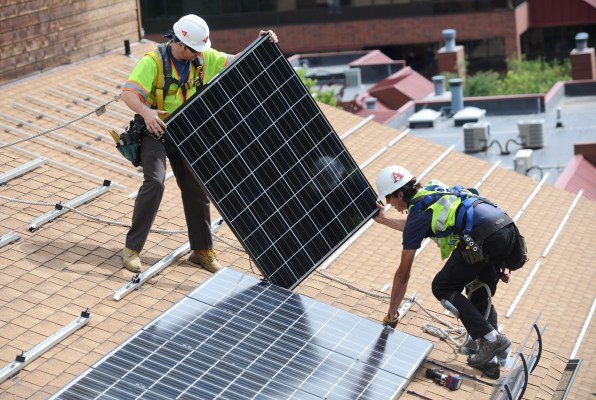One of the major stories that defined the tech sector in 2023 was layoffs. Companies large and small shed over 240,000 jobs in the last year, and while the trend has cooled of late, it hasn’t stopped, with nearly 7,000 jobs cut in November alone.
But there have been bright spots. Climate tech is one sector that has been hiring, and 2024 looks like it will be continuing the trend.
Clean energy jobs have grown 10% in the past two years, outpacing the economy as a whole, according to a report by industry group E2. Through 2032, when the Inflation Reduction Act is set to expire, the fastest-growing job fields include wind turbine technician (45% growth) and solar photovoltaic installer (22% growth), according to the Bureau of Labor Statistics.
For startups, 2023 was more muddled. As investors closed their pocketbooks, founders had to make hard choices about how to extend their runways. Some had to resort to layoffs, but not everyone. Many founders I’ve spoken with continue to emphasize that they’re hiring for a variety of roles.
For those laid off from the general tech sector, climate tech would appear to be an appealing pivot, and for many, that’s proving to be true. Nearly every company needs software developers, project managers and designers. Is there a need for 240,000 of them? Probably not yet. And some that look like a close fit might require a bit of climate or energy knowledge on the part of the applicant.
In other words, there’s a skills gap.
That shouldn’t be surprising. The economy of the last century-plus has been oriented around burning fossil fuels; the economy of the 21st century won’t be. Even if you have skills that port from the old to the new — like oil rig operators switching to geothermal — there’s some amount of relearning that has to take place.
That, coupled with the fact that expats from the general tech world have been increasingly interested in climate tech jobs, has fueled the growth of a very particular type of business: climate tech job career sites. Several have popped up in recent years, including Terra.do, Climatebase, MCJ Collective (which is also a venture capital firm), and Climate Draft.
To varying degrees, these sites offer not just job postings, but also networking events, educational resources, even training cohorts that help job seekers recognize how their skills fit into the climate tech world while teaching them new ones.
As if to underline the importance of these companies to the climate tech sector, venture capital firm Lowercarbon bought Climate Draft in September.
In the past few years, climate tech jobs have skewed toward those needed by early-stage startups. In the coming years, as they move toward commercialization, they’ll be hiring for a broader range of roles — and more of them. It won’t just be scientists and engineers, but sales, service and support staff, too.
Tech jobs are just a fraction of what’ll be needed, of course. There will be a need for wind turbine technicians and solar installers, as the BLS helpfully points out, but also geothermal borehole drillers, hydrogen plant operators, EV charger technicians, battery recyclers and heat pump installers.
The move toward climate-friendly jobs has been in the works for years, as E2’s data shows. Simple economics have been pushing things in that direction, driven mostly by the falling costs of solar, wind and batteries, and the labor market has been responding.
But as new government policies fall into place, including the Inflation Reduction Act and the Bipartisan Infrastructure Law in the U.S. and the Green Deal in the EU, the job market in climate tech is certain to get even hotter. Between those three alone, the U.S. and the EU are investing over $800 billion in climate and environment initiatives, a figure that is likely to be conservative when the final tally is complete.
It’s a gusher of money that has taken a while to uncork, but as it starts to flow in earnest, the demand for labor will only increase. Where the money goes, so do the jobs.
